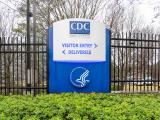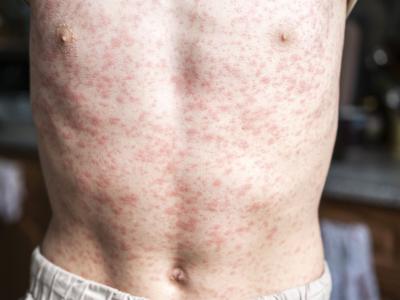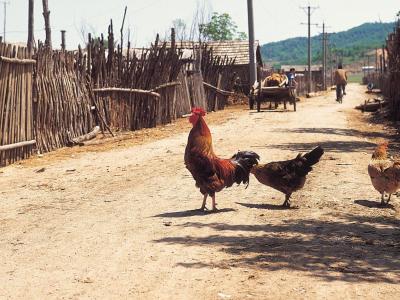Dec 12, 2007 (CIDRAP News) – As US officials wrap up efforts to gauge the public's response to a draft plan for allocating vaccine supplies during an influenza pandemic, suggestions to fine-tune the plan are emerging, such as giving higher priority to critical infrastructure workers, the families of key healthcare workers, and community pharmacists.
A 3-day Web dialogue, held Dec 4 through 6, drew about 420 people who either participated in or observed guided discussions on various aspects of the pandemic vaccine prioritization draft, according to summaries of the dialogue posted on the event Web site. The event was sponsored by the US Department of Health and Human Services (HHS) and the Centers for Disease Control and Prevention (CDC), along with the Association of State and Territorial Health Officials (ASTHO) and National Association of County and City Health Officials (NACCHO).
The groups, with assistance from the Keystone Center, a nonprofit science public policy group based in Keystone, Colo., will hold a stakeholder meeting in Washington, DC, tomorrow. They also sponsored a series of public engagement meetings in January in Las Cruces, N.M., and Nassau County, N.Y., and in November in Milwaukee and Henderson County, N.C. HHS is taking comments on the draft pandemic vaccine allocation plan through Dec 31, according to a Federal Register notice.
A federal interagency working group presented its vaccine prioritization draft to HHS's National Vaccine Advisory Committee on Oct 23. The tiered approach lists key health and safety personnel and children as top priorities.
During the Web dialogue, participants offered several ideas for revising the draft guidance, according to daily summaries on the dialogue Web site. Some suggested that adding an age criterion to the occupation groups might help the plan fulfill its goals of reducing deaths and maintaining critical infrastructure. "It was noted that the draft guidance is not age-based, but leans more toward protecting society (critical infrastructure) and the population groups at the top [of the priority lists]," the summary notes.
One of the main themes, according to the daily summaries, was protecting critical infrastructure, especially the electric power grid. Employees who maintain electrical systems should be moved to the top tier, many of the participants said.
"Some suggested that the only true critical infrastructure is electric power," the dialogue summary said. Employees who maintain power systems "should receive the highest priority for prophylactic antiviral medications, have special support for their families, and be first in line for vaccine," the summary noted.
The vaccination priority of family members was also raised several other times during the Web dialogue. Though many participants seemed to support family coverage for first responders and other key healthcare workers, there was less of a consensus on priority status for the families of military members and homeland security employees. Some surveys have indicated that many healthcare workers will not show up for work during a pandemic if their families don't receive antiviral medication or vaccines and if they don't have adequate personal protective equipment.
Some participants said the final vaccine priority plan should factor in important supply chain issues and protect workers who produce and deliver necessities such as raw materials, medicine, food, and fuel.
The discussion moderators asked participants what the government should do to make the vaccine priority plan more acceptable to the public. Suggestions included keeping citizens informed when supplies of vaccines and antiviral medications change. "Citizens will be enraged if their expectation is not adjusted before a pandemic starts. Set the policy for the current reality and be up-front about the implications," the summary said.
Though the discussion summaries don't suggest that participants supported moving many groups down on the priority list, a poll at the end of the dialogue asked participants to make some difficult choices. The dialogue summary said the poll questions were crafted from questions and concerns from the dialogue and public engagement sessions. About 170 people took part in the poll, which also included some who attended public engagement sessions in Henderson County, N.C., and Milwaukee. The poll results are available on the dialogue Web site.
For example, when participants were asked if people aged 80 or older should be moved from tier 4 to tier 5, 76% (129) agreed to some extent. And when they were asked if school-age children should be moved up and vaccinated before infants and younger children, 79% (135) agreed.
Terry Adirim, MD, MPH, a member of the federal interagency work group that produced the draft vaccine plan, served as a panelist during all of the Web dialogue. Adirim is medical adviser for medical readiness in the Office of Health Affairs in the US Department of Homeland Security. She also helped facilitate some of the public engagement forums.
Adirim said the dialogue and public engagement sessions were designed both to solicit public comments and to educate the public about pandemic readiness issues, and the facilitators were impressed with how much many of the attendees already knew about the topics. "We consider it a success," she said, adding that participants made it clear they had concerns about personal preparedness and government transparency about pandemic and vaccine-related issues.
"People also wanted children protected, and moderators familiar with the vaccine plan were able to address why they [the interagency working group] did what they did," Adirim said.
Nicholas Kelley, a masters' degree candidate in environmental public health at the University of Minnesota, took part in the dialogue during all 3 days. "I'm 24, so I'm in an age-group that would be at high risk, and these issues are fascinating to me," he said. Kelley is also a research assistant for the CIDRAP Business Source and has worked on college pandemic plans.
He said many of the participants were uncertain about how the case-fatality rate during a pandemic will actually steer vaccination strategies, especially since what's known about the rates during a pandemic is based on historical data. "There's a lot of disconnect," Kelley said.
"People really want to keep as many alive as possible, but no one really wanted to move people down [the priority list]," he said.
Support for protecting critical infrastructure workers grew as the Web dialogue progressed, Kelley noted. "You could see a real shift by the third day. People were adamant about critical infrastructure," he said.
"In a public forum, there are always possibilities for heated emotional exchanges, but the Web format included well-articulated and thought-out comments," Kelley said of the Web dialogue.
In a previous report, the federal interagency working group said that after receiving public comments it would revise the vaccine prioritization plan, which will be considered a final interim report.
See also:
Draft Guidance on Allocating and Targeting Pandemic Influenza Vaccine
http://www.flu.gov/individualfamily/vaccination/allocationguidance.pdf
Oct 24 CIDRAP News story "Pandemic vaccine proposal favors health workers, children"
Federal Register notice on comment submission
Pandemic vaccine prioritization Web dialogue site
Pandemic vaccine allocation poll results


















